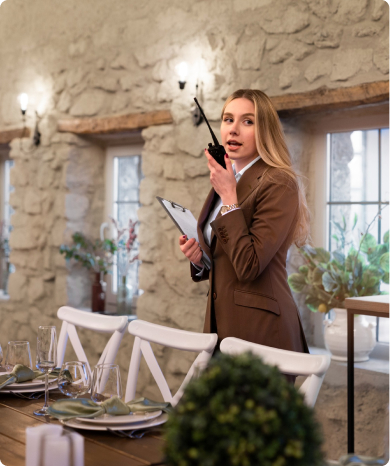
Catering for Large Events: How to Ensure a Seamless Experience
Catering for large events presents a unique set of challenges and opportunities for caterers. From weddings and corporate galas to festivals and conferences, serving a large number of guests requires meticulous planning, organization, and execution to ensure a seamless dining experience. In this article, we'll explore strategies and tips for catering large events successfully, from menu planning to logistics and staffing.
-
1. Start with Thorough Planning
The key to success in catering for large events is thorough planning. Begin by gathering all the necessary information about the event, including the guest count, venue layout, dietary restrictions, and any special requests from the client. Use this information to create a detailed catering plan that outlines the menu, staffing requirements, equipment needs, and timeline for setup and service.
-
2. Customize the Menu
When catering for a large crowd, it's essential to offer a diverse menu that caters to different tastes and dietary preferences. Work closely with your client to customize the menu based on the theme of the event, the preferences of the guests, and any dietary restrictions. Consider offering a mix of appetizers, main courses, sides, and desserts, as well as vegetarian, vegan, and gluten-free options to accommodate all guests.
-
3. Focus on Efficiency in Service
Efficiency is key when serving a large number of guests. Streamline your service process to minimize wait times and ensure that all guests are served promptly. Consider implementing buffet-style or family-style service options, which allow guests to serve themselves and help reduce congestion at food stations. Train your staff to work efficiently and communicate effectively to ensure smooth coordination during service.
-
4. Prioritize Food Safety
Food safety is paramount when catering for large events. Take steps to ensure that all food is prepared, stored, and served safely to prevent the risk of foodborne illness. Maintain proper temperature control for hot and cold foods, use separate utensils and serving dishes for different dishes to prevent cross-contamination, and monitor food hygiene practices throughout the event.
-
5. Scale Up Logistics and Staffing
Catering for large events requires careful coordination of logistics and staffing to ensure everything runs smoothly. Scale up your equipment and staffing levels to meet the demands of the event, including additional kitchen equipment, serving stations, and waitstaff. Assign specific roles and responsibilities to your staff and provide adequate training to ensure everyone knows their tasks and can work efficiently together.
-
6. Communicate Effectively with Clients and Vendors
Effective communication is essential for catering large events successfully. Keep the lines of communication open with your clients throughout the planning process to address any concerns or changes to the event. Coordinate closely with other vendors, such as venue managers, event planners, and rental companies, to ensure seamless coordination on the day of the event.
-
Conclusion
Catering for large events presents both challenges and opportunities for caterers. By starting with thorough planning, customizing the menu, focusing on efficiency in service, prioritizing food safety, scaling up logistics and staffing, and communicating effectively with clients and vendors, you can ensure a seamless dining experience that leaves a lasting impression on your guests. With careful planning, attention to detail, and teamwork, catering large events can be a rewarding and successful endeavor for caterers of all sizes.
